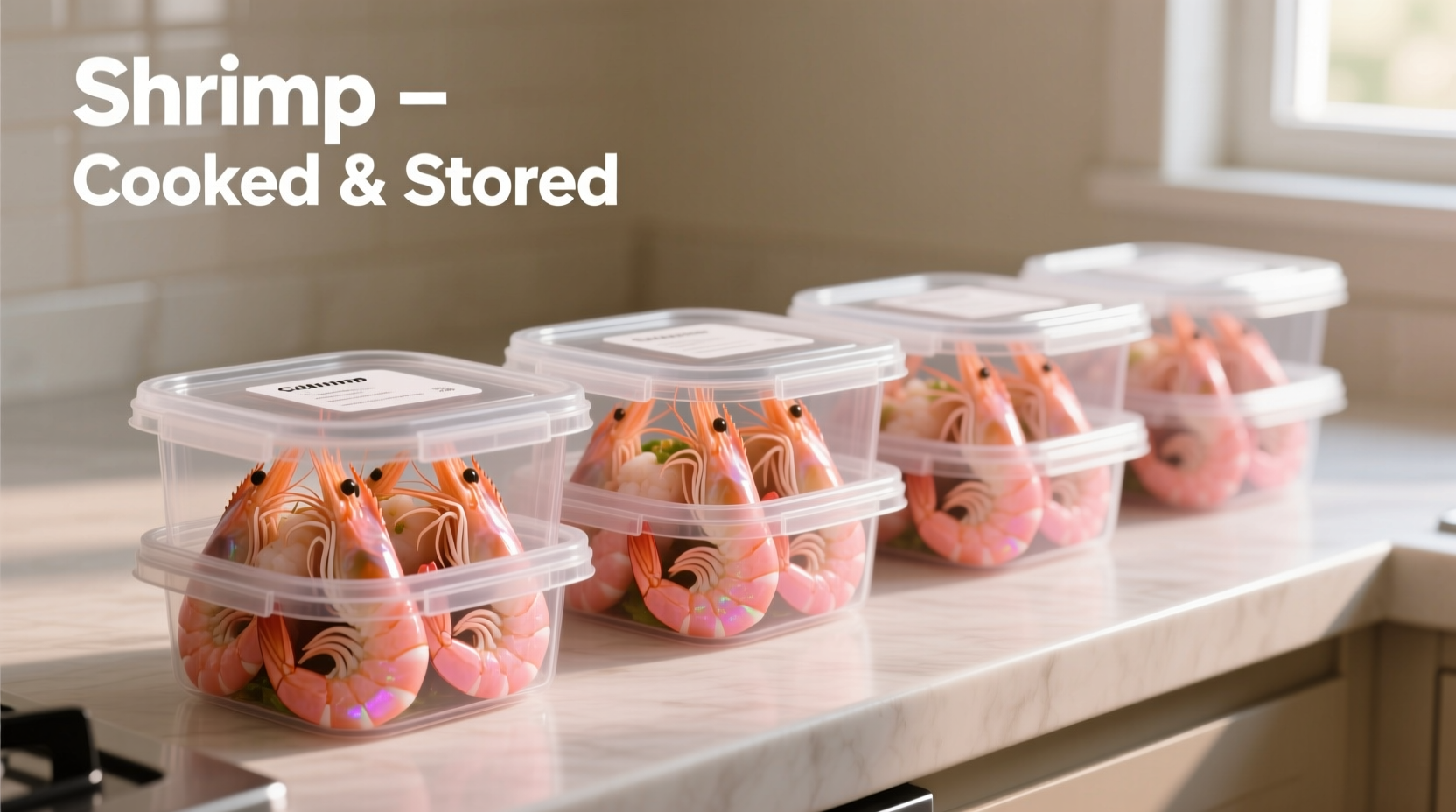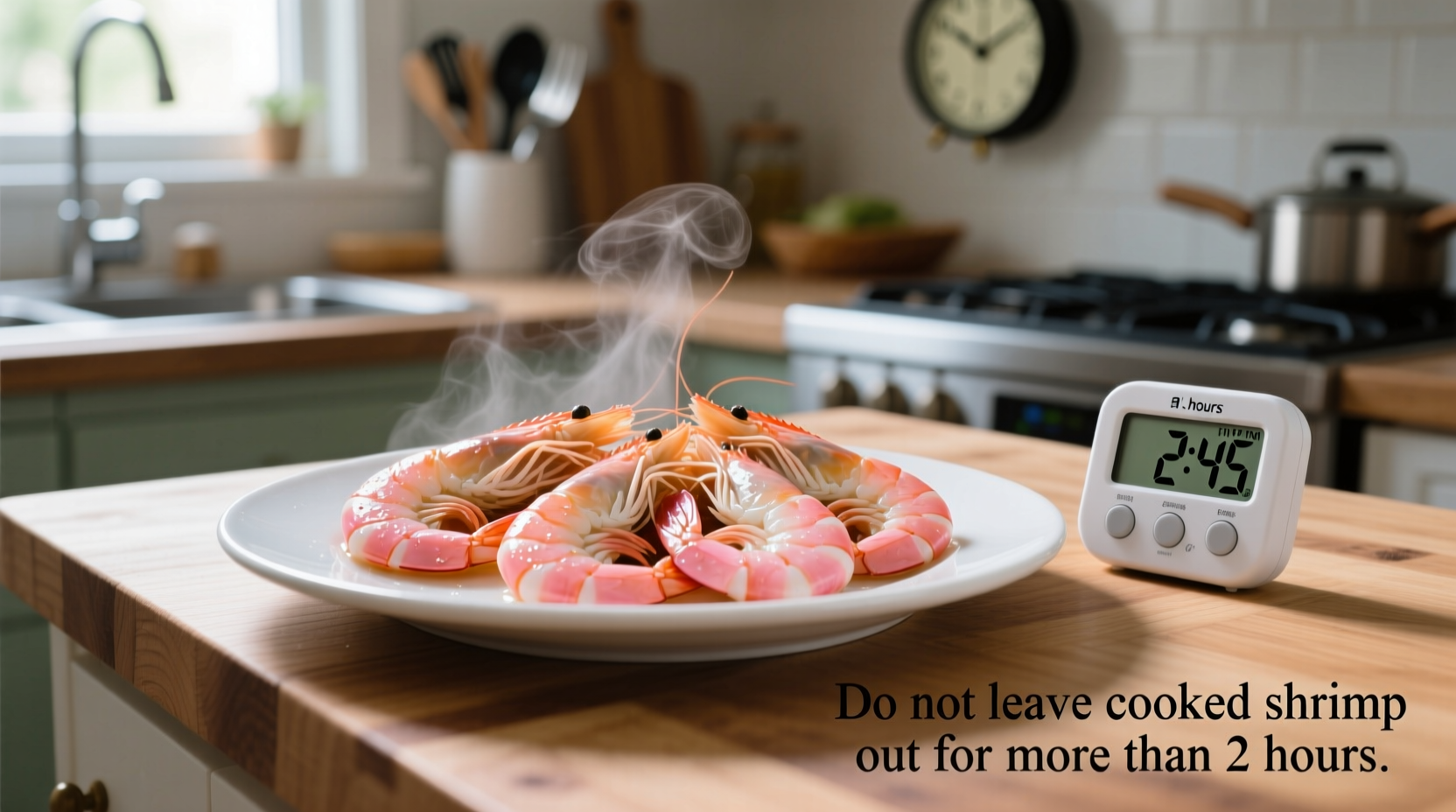Ever hosted a backyard barbecue only to wonder if that bowl of cooked shrimp has been sitting out too long? You're not alone. Each year, millions of people face foodborne illnesses from improperly handled seafood. Getting this wrong isn't just about wasted food—it's about protecting your family's health. Let's break down exactly when that delicious shrimp becomes a hazard.
The Critical Two-Hour Rule Explained
When cooked shrimp enters the "danger zone" between 40°F and 140°F (4°C–60°C), bacteria like Staphylococcus aureus and Vibrio multiply rapidly. The USDA Food Safety and Inspection Service confirms that bacterial counts can double every 20 minutes in this temperature range. That seemingly harmless shrimp salad could contain enough pathogens to cause severe illness after just two hours at room temperature.
| Ambient Temperature | Maximum Safe Time | Key Risk Factors |
|---|---|---|
| Below 90°F (32°C) | 2 hours | Standard room conditions |
| Above 90°F (32°C) | 1 hour | Outdoor events, hot kitchens |
| Refrigerated (40°F/4°C or below) | 3-4 days | Proper airtight storage required |
This temperature timeline comes directly from the USDA Food Safety and Inspection Service guidelines, which establish science-based parameters for safe food handling. During summer months or in warm climates, that shrimp reaches dangerous contamination levels much faster than most people realize.
When the Clock Starts Ticking: Real-World Scenarios
Your shrimp's safety countdown begins the moment it leaves proper temperature control. Consider these common situations:
- Post-cooking cooling period: Many home cooks make the mistake of letting shrimp cool completely on the counter before refrigerating. This extended cooling time often pushes the food deep into the danger zone.
- Buffet-style serving: At gatherings, shrimp often sits out while guests serve themselves. Use ice beds under serving dishes to maintain safe temperatures during extended events.
- Takeout containers: That convenient plastic container from your favorite restaurant isn't designed for long-term storage. Transfer leftovers to shallow containers immediately upon arrival home.

Spotting Spoilage: Beyond the Clock
While timing provides the safest guideline, certain visual and sensory cues indicate shrimp has spoiled regardless of time elapsed:
- Texture changes: Slimy or sticky surface texture signals bacterial growth
- Odor development: Sour, ammonia-like, or strong fishy smells indicate spoilage
- Color shifts: Yellowing or gritty appearance means discard immediately
- Moisture accumulation: Excess liquid in storage containers creates ideal bacterial breeding conditions
When in doubt, throw it out. The FDA Food Code emphasizes that sensory evaluation alone isn't reliable for determining food safety, as dangerous pathogens often don't alter appearance or smell.
Proper Storage Techniques That Actually Work
Follow these professional kitchen-tested methods to maximize both safety and quality:
- Immediate cooling: Divide large batches into shallow containers (no more than 2 inches deep) to accelerate cooling
- Ice bath method: For large quantities, place container in ice water while stirring occasionally
- Airtight storage: Use containers with tight-fitting lids or vacuum sealing to prevent moisture loss and contamination
- Labeling system: Mark containers with preparation date and "use by" deadline (3-4 days)
For longer preservation, freeze cooked shrimp in a single layer on a baking sheet before transferring to freezer bags. This prevents clumping and maintains individual shrimp integrity. Properly frozen shrimp remains safe indefinitely, though quality peaks within 3-6 months.
Reheating Safely: Don't Double the Danger
Improper reheating creates additional risks. Follow these steps:
- Thaw frozen shrimp overnight in the refrigerator—never at room temperature
- Reheat only the portion you plan to consume immediately
- Reach 145°F (63°C) internal temperature for at least 15 seconds
- Consume reheated shrimp within 2 hours—do not return to refrigerator
Remember: Each time you cycle cooked shrimp through the danger zone, you multiply bacterial counts exponentially. The FDA's Food Code specifically prohibits multiple cooling and reheating cycles for safety reasons.
Special Circumstances Requiring Extra Caution
Certain situations demand stricter time limits than the standard two-hour rule:
- Picnics and outdoor events: High humidity accelerates spoilage—use insulated containers with ice packs
- Buffets with self-service: Unsupervised access leads to extended temperature exposure
- Commercial kitchens: Health department regulations require stricter time monitoring with documented logs
- Vulnerable populations: When serving young children, elderly, or immunocompromised individuals, reduce time limits by 50%
FoodSafety.gov specifically warns that seafood poses higher risks than many other proteins due to its rapid bacterial growth potential. Their research shows shrimp contamination can reach dangerous levels 30% faster than poultry under identical conditions.
Common Myths That Put You at Risk
Don't fall for these dangerous misconceptions:
- "If it smells okay, it's safe" - Pathogenic bacteria often don't produce noticeable odors
- "Reheating kills all bacteria" - Some bacteria produce heat-stable toxins that survive cooking
- "The two-hour rule is just a guideline" - This is a science-based safety threshold, not a suggestion
- "Leftovers are good until they grow mold" - Mold visible to the eye indicates extensive contamination already exists
Understanding these realities helps you make informed decisions about when to enjoy leftovers and when to discard them safely.
When Food Safety Meets Culinary Excellence
Following proper food safety protocols doesn't mean sacrificing flavor. In fact, proper temperature control preserves shrimp's delicate texture and sweet flavor. Chefs know that rapid cooling maintains cellular structure, preventing the mushy texture that develops during slow cooling. Your commitment to food safety directly enhances your dining experience—it's not just about avoiding illness, but about serving the best possible dish.











 浙公网安备
33010002000092号
浙公网安备
33010002000092号 浙B2-20120091-4
浙B2-20120091-4